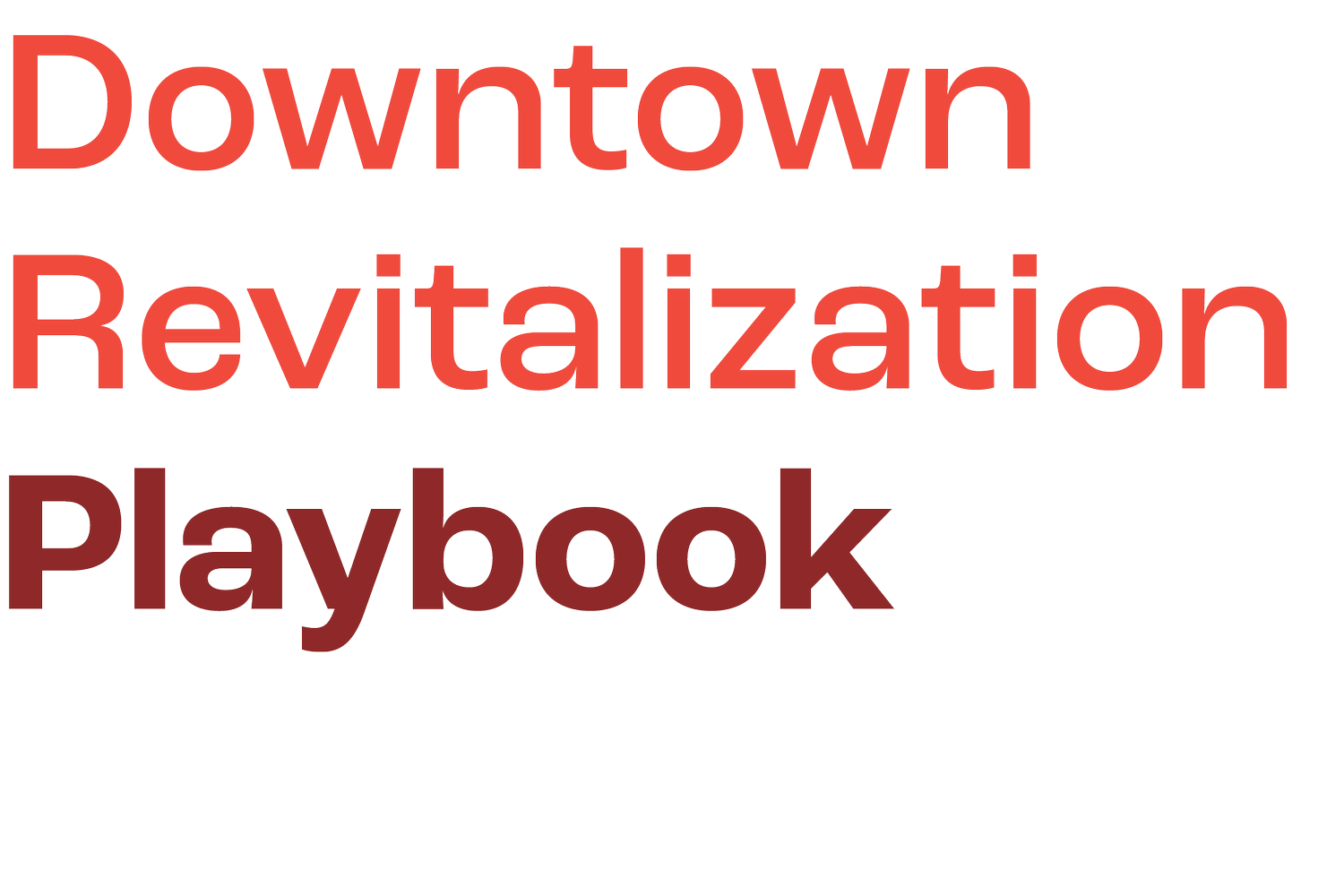
5 Stages of Investment & Prework
Ready for investment? Congratulations! Just as a football game consists of four quarters and various plays needed to win, there are certain stages and next steps to expect when making downtown investments. This page explains the common stages and will explain how investment moves each stage forward.
There are four primary stages: Planning, Predevelopment, Development, and Management. And the Playbook emphasizes the “Go/ No-Go Decision” (Make A Choice) which represents a point in time that either makes or breaks a project. It separates the stages into two parts, and provides an opportunity for the core team to evaluate their performance and regroup. On the left side of the diagram, work consists of ideas that only exist on paper. On the right side are physical actions being taken - construction, etc.
Planning
In Pineville, KY, Jacob Roan said: “Sometimes I asked, ‘why are we spending $30,000 on plans when we already know what we want to do,’ but looking back we could never have done this without them…we would have left out so much.” This stage includes the initial Discovery phase of the project with preliminary planning. Gather your core team and recruit partners, engage the community, perform a preliminary needs analysis, and develop a shared vision.
Predevelopment
Framing some of these complicated investments may feel impossible without a guide/navigator to help. You may consider adding others to your team with specific expertise like an architect or engineer. There is also help for specific types of investments like New Market Tax Credits (NMTC). The NMTC can seem wildly difficult to understand, but a navigator/TA provider like People, Inc. can help simplify complicated processes. During predevelopment you will finalize the project team, create architectural and engineering plans, perform an in-depth market analysis, attain the rights to develop the site, and secure funding and financing. You may consider creating a prospectus like the one in the Appendix. Hazard, Kentucky used AmeriCorps VISTA and a regional fellows program to start the pre-work for renovating the Art Station. Hazard also implemented a building inventory which drew attention to the need for downtown revitalization. The inventory also engaged the local government in realizing it was important to invest in staff to work on downtown revitalization.
Go/No-Go/Modify Decision
Does the project have all the funding it needs? Is there enough demand to move forward as-is, or should the team go back and modify plans? It’s not always a clear black-and-white decision. Often, the team decides to make adjustments and must return to the planning or predevelopment stage before it can move forward to the last two stages.
Development
Here the biggest investment takes place. If construction is needed, it starts now. Staff members are often engaged to manage and administer the project.
Management
This stage may last indefinitely and involves the ongoing administration of the property. It’s important to include sustainability into the initial plans to get the greatest return on investment.
The Pre-Work Before Investment
What pre-work needs to happen before investment? How do communities, developers, and entrepreneurs know the business ideas they have for their downtown have a viable market? Approaching downtown revitalization from the demand side can be a valuable way of beginning.
Downstream Strategies
Downstream Strategies is a WV environmental/economic development consulting firm and source for objective, data-based analyses and plans. The firm provides the types of predevelopment work needed prior to downtown revitalization investment.
Many of their projects start as Brownfield projects. Restoring blighted industrial/commercial properties can have a transformative effect on communities. Before redevelopment, steps might include:
Property assessment to determine if there is contamination and to what extent
Remediation plans
Economic impact/market assessments. This can help identify what the town has that can serve a particular market, so the best way to move forward can be determined
In the Upper Kanawha Valley of WV, the neighboring communities of Smithers and Montgomery are targeted for large-scale trail development. Community leaders hope to draw more tourists into their downtowns to help stabilize and revitalize the local economy.
Downstream Strategies provided:
A roadmap to help them achieve their goal of a trail-based tourism economy, specifically how the River Cities can develop their community capacity for tourism and take advantage of new market opportunities in the outdoor economy
Comprehensive market assessment for trail-based tourism
An assessment of existing tourism infrastructure, comparing what visitors look for in a trail town with what they currently have
Identification of specific opportunities for tourism-sector business development: detailed business startup scenarios for tourism-sector opportunities linked to specific local brownfields properties
A checklist guiding leaders in launching their nascent tourism economy
Reclaiming Appalachia Coalition
The Reclaiming Appalachia Coalition pays for the Downstream Strategies team to provide very basic project assistance to selected communities across the Appalachian region. In the past, Downstream Strategies worked with the West Virginia Community Development Hub and the West Virginia Brownfields Assistance Centers to offer these services to WV communities. Clients have increasingly funded this work through Brownfields redevelopment grants, trail planning grants, and general operating budgets. The EPA Brownfields program can also fund these kinds of projects. Services such as these can range anywhere from $2-5,000 for smaller projects to $100,000 for the larger projects.
Links to additional resources and toolkits to guide you through specific types of projects can be found. For instance, the Community Action Partnership (CAP) has two highly recommended toolkits — one for Community Facility Development and another for Mixed Use/Mixed Income Development.
Community Action Partnership is a national, 501(c)3 nonprofit membership organization that provides technical assistance, training, and other resources to Community Action Agencies, nonprofits, and public groups. This playbook bases the stages of development on visual aides provided in these CAP toolkits with a few minor revisions.

